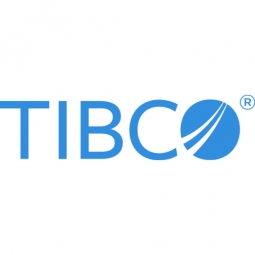下载PDF
Quinte Uses Benchmark Analytics to Reduce Costs and Improve Business Outcomes
技术
- 分析与建模 - 预测分析
- 分析与建模 - 实时分析
- 应用基础设施与中间件 - 数据交换与集成
适用行业
- 医疗保健和医院
适用功能
- 商业运营
- 质量保证
用例
- 过程控制与优化
- 远程病人监护
服务
- 数据科学服务
- 系统集成
- 培训
挑战
The result of these funding trends was that QHC no longer received a predictable amount of money from the government. Sixty percent of its funding is now based on demographics, referral patterns, and outcomes. While this is a positive step towards improving patient care, it requires the organization to identify opportunities that align with this new model. Initial estimates called for the company to find $10 million in savings from its $160 million budget. To meet these needs, QHC used TIBCO to build a data warehouse and deliver analytics via a user-friendly portal. More than 300 people throughout the organization, from nurses to executives, rely on this tool to measure fundamental processes and analyze critical patient data trends. TIBCO technology has helped the company measurably improve operations, meet financial requirements, and increase favorable outcomes in patient care.
关于客户
Quinte Healthcare Corporation (QHC) is a healthcare provider in Ontario, Canada, that operates multiple hospitals and healthcare facilities. The organization is responsible for delivering a wide range of healthcare services to the community, including acute care, emergency services, and specialized treatments. QHC is committed to improving patient outcomes and operational efficiency, particularly in light of Ontario’s Health System Funding Reform (HSFR), which emphasizes evidence-based funding and shifting resources from hospitals to home care. With a significant portion of its funding now based on demographics, referral patterns, and outcomes, QHC is focused on leveraging data and analytics to optimize its operations and enhance patient care.
解决方案
QHC purchases benchmarking data gathered from healthcare providers across Canada. It then uses TIBCO’s platform to integrate its data and systems for additional analysis. For example, TIBCO’s analytics platform revealed that one of QHC’s smaller facilities had demonstrably lower costs and better recovery rates for treating chronic obstructive pulmonary disease (COPD). The data showed that larger hospitals tend to order more tests, partly because there is less interaction between the COPD specialist and the family physician, and thus less knowledge shared. 'The platform underscored the fact that the best practice is to get personal physicians more closely involved in the circle of care,' Papadakos explains. 'In many cases, we need to drill down into the data to understand these opportunities fully.'
运营影响
数量效益
相关案例.

Case Study
Hospital Inventory Management
The hospital supply chain team is responsible for ensuring that the right medical supplies are readily available to clinicians when and where needed, and to do so in the most efficient manner possible. However, many of the systems and processes in use at the cancer center for supply chain management were not best suited to support these goals. Barcoding technology, a commonly used method for inventory management of medical supplies, is labor intensive, time consuming, does not provide real-time visibility into inventory levels and can be prone to error. Consequently, the lack of accurate and real-time visibility into inventory levels across multiple supply rooms in multiple hospital facilities creates additional inefficiency in the system causing over-ordering, hoarding, and wasted supplies. Other sources of waste and cost were also identified as candidates for improvement. Existing systems and processes did not provide adequate security for high-cost inventory within the hospital, which was another driver of cost. A lack of visibility into expiration dates for supplies resulted in supplies being wasted due to past expiry dates. Storage of supplies was also a key consideration given the location of the cancer center’s facilities in a dense urban setting, where space is always at a premium. In order to address the challenges outlined above, the hospital sought a solution that would provide real-time inventory information with high levels of accuracy, reduce the level of manual effort required and enable data driven decision making to ensure that the right supplies were readily available to clinicians in the right location at the right time.

Case Study
Gas Pipeline Monitoring System for Hospitals
This system integrator focuses on providing centralized gas pipeline monitoring systems for hospitals. The service they provide makes it possible for hospitals to reduce both maintenance and labor costs. Since hospitals may not have an existing network suitable for this type of system, GPRS communication provides an easy and ready-to-use solution for remote, distributed monitoring systems System Requirements - GPRS communication - Seamless connection with SCADA software - Simple, front-end control capability - Expandable I/O channels - Combine AI, DI, and DO channels

Case Study
Driving Digital Transformations for Vitro Diagnostic Medical Devices
Diagnostic devices play a vital role in helping to improve healthcare delivery. In fact, an estimated 60 percent of the world’s medical decisions are made with support from in vitrodiagnostics (IVD) solutions, such as those provided by Roche Diagnostics, an industry leader. As the demand for medical diagnostic services grows rapidly in hospitals and clinics across China, so does the market for IVD solutions. In addition, the typically high cost of these diagnostic devices means that comprehensive post-sales services are needed. Wanteed to improve three portions of thr IVD:1. Remotely monitor and manage IVD devices as fixed assets.2. Optimizing device availability with predictive maintenance.3. Recommending the best IVD solution for a customer’s needs.

Case Study
HaemoCloud Global Blood Management System
1) Deliver a connected digital product system to protect and increase the differentiated value of Haemonetics blood and plasma solutions. 2) Improve patient outcomes by increasing the efficiency of blood supply flows. 3) Navigate and satisfy a complex web of global regulatory compliance requirements. 4) Reduce costly and labor-intensive maintenance procedures.

Case Study
Harnessing real-time data to give a holistic picture of patient health
Every day, vast quantities of data are collected about patients as they pass through health service organizations—from operational data such as treatment history and medications to physiological data captured by medical devices. The insights hidden within this treasure trove of data can be used to support more personalized treatments, more accurate diagnosis and more advanced preparative care. But since the information is generated faster than most organizations can consume it, unlocking the power of this big data can be a struggle. This type of predictive approach not only improves patient care—it also helps to reduce costs, because in the healthcare industry, prevention is almost always more cost-effective than treatment. However, collecting, analyzing and presenting these data-streams in a way that clinicians can easily understand can pose a significant technical challenge.






